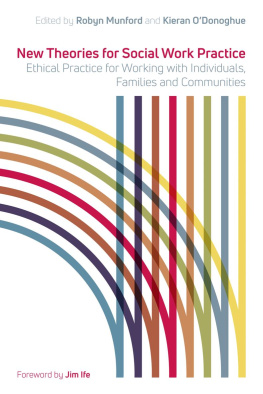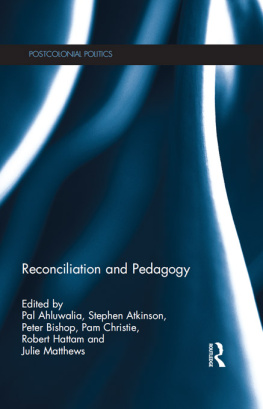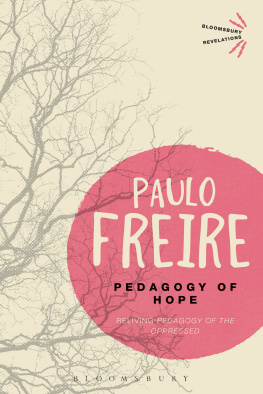First published in Great Britain in 2013 by
The Policy Press
University of Bristol
Fourth Floor
Beacon House
Queens Road
Bristol BS8 1QU
UK
Tel +44 (0)117 331 4054
Fax +44 (0)117 331 4093
e-mail
www.policypress.co.uk
North American office:
The Policy Press
c/o The University of Chicago Press
1427 East 60th Street
Chicago, IL 60637, USA
t: +1 773 702 7700
f: +1 773-702-9756
e:
www.press.uchicago.edu
The Policy Press 2013
British Library Cataloguing in Publication Data
A catalogue record for this book is available from the British Library.
Library of Congress Cataloging-in-Publication Data
A catalog record for this book has been requested.
ISBN 978 1 44730 539 2 paperback
ISBN 978 1 44730 538 5 hardcover
The right of Jan Stor to be identified as author of this work has been asserted by him in accordance with the 1988 Copyright, Designs and Patents Act.
All rights reserved: no part of this publication may be reproduced, stored in a retrieval system, or transmitted in any form or by any means, electronic, mechanical, photocopying, recording, or otherwise without the prior permission of The Policy Press.
The statements and opinions contained within this publication are solely those of the editors and contributors and not of The University of Bristol or The Policy Press. The University of Bristol and The Policy Press disclaim responsibility for any injury to persons or property resulting from any material published in this publication.
The Policy Press works to counter discrimination on grounds of gender, race, disability, age and sexuality.
Cover design by thecoverfactory
Front cover: image kindly supplied by www.istock.com
Printed and bound in Great Britain by TJ International, Padstow
The Policy Press uses environmentally responsible print partners
Readers Guide
This book has been optimised for PDA.
Tables may have been presented to accommodate this devices limitations.
Image presentation is limited by this devices limitations.
It may be useful for the reader to know something about my starting point for writing this book, as it affects some of the more technical discussions I describe. As you read, you will see that social pedagogy straddles the domains of theory and practice. The practical part has one foot in various types of change-oriented and environmental, or milieu therapy with children and young people, while the other is immersed in the application of the law and in the administration of casework. I want to say something about my own position in these fields.
I worked for many years in the child welfare field, first and foremost in residential care. This places me more firmly in a practical than a theoretical domain. It is, therefore, not surprising that I write about the practising element of social pedagogy, as this is where my main experience lies. However, over the past few years, my interest in understanding what is happening on a higher theoretical level has increased. This led to a Masters degree in social work, and subsequently to a teaching position as associate professor in the Faculty of Social Sciences at Oslo and Akershus University College of Applied Sciences. That makes me a practitioner who has directed his gaze towards the theoretical field, towards academia. I have experienced the inherent duality of social pedagogy as a professional field.
The other particular feature of my experience is that I have worked far more in residential care where I have encountered children and young people struggling with their lives than I have been involved in the administration of casework. My version of practical social pedagogy is, therefore, more oriented towards change-oriented and milieu work than towards the child welfare pedagogues casework in the child welfare services. I have, of course, tried to take this into consideration while writing, so that the book does not end up dealing only with milieu work.
During the work on the book, I used both books and articles and a fundamental understanding gained through contact over many years with two of my professional mentors: Erik Grnvold and Erik Larsen. I have used Erik Grnvold as a conversation partner during the work on the book, and he has generously shared his knowledge of social pedagogy with me during our many discussions. I have also learnt a lot from teaching alongside him. Erik Larsen is mostly represented in the book through my use of some of his professional ideas as expressed in his books and articles, but also through our conversations. Erik Larsen has a psychological eye on the work with children and young people, and he writes mostly about milieu therapy. I have, in other words, pulled out elements of this thinking and used them as building blocks in my own attempt at describing a pedagogically oriented practice. I am wholly responsible for such use. A big thank you to Erik and Erik.
Some of the material has been developed in dialogue with Jan Tesli Stokke in connection with our seminars for institution personnel in North West Russia over several years. I have learnt a lot about social pedagogy through this, and am grateful both to him and the seminar participants.
As I have included much of my own experience in the material, I ought to mention two of my previous workplaces: Frydenberg Residential Youth Centre in the late 1970s and early 1980s, and Grepperd Child Welfare Centre in the 1990s. These two in particular have been my arenas of experience.
Many people deserve thanks for their help with the writing process. My boss during the period when I started the work, the then Head of Studies se Broman, and my boss when I completed the work, Head of Studies Eva Bertling Herberg, have both contributed by generously allowing me to make time for writing. The Norwegian Union of Social Educators and Social Workers (FO) has provided me with a grant in order to finance the writing period, as did my previous employer, the Department of Social Work at Oslo University College. These two sources of finance have been vital in order to complete the book.
Several people have read through parts or all of the manuscript in order to give feedback, corrections and advice. Such help is invaluable to an author. Anne Jansen and Erik Grnvold, in particular, have contributed much excellent input and many discussions. Benny Lihme has also read my material, and his feedback has been very useful. In addition, Stein Himsett, Amelie Fougner and se Broman have provided excellent contributions after reading different versions of the manuscript along the way. It has also given me great pleasure to read parts of Roger Mathiesens own manuscript (Mathiesen, 2008), and have discussions with him.
Moss/Oslo
updated 10 December 2012
JS
Discussion of social pedagogy in Norway is often prefaced by describing the foundation of the study of social pedagogy at the University of Oslo in 1975. According to Jger Sivertsen and Kvaran (2006) the Oslo approach to the study of pedagogy and education was more sociological: characterised by an orientation towards society and with a more radical profile. Today in Norway only professional education for the barnevernpedagog (child welfare pedagogue) can be said to rest fully on social pedagogic grounds. The Norwegian Ministrys General Plan for









